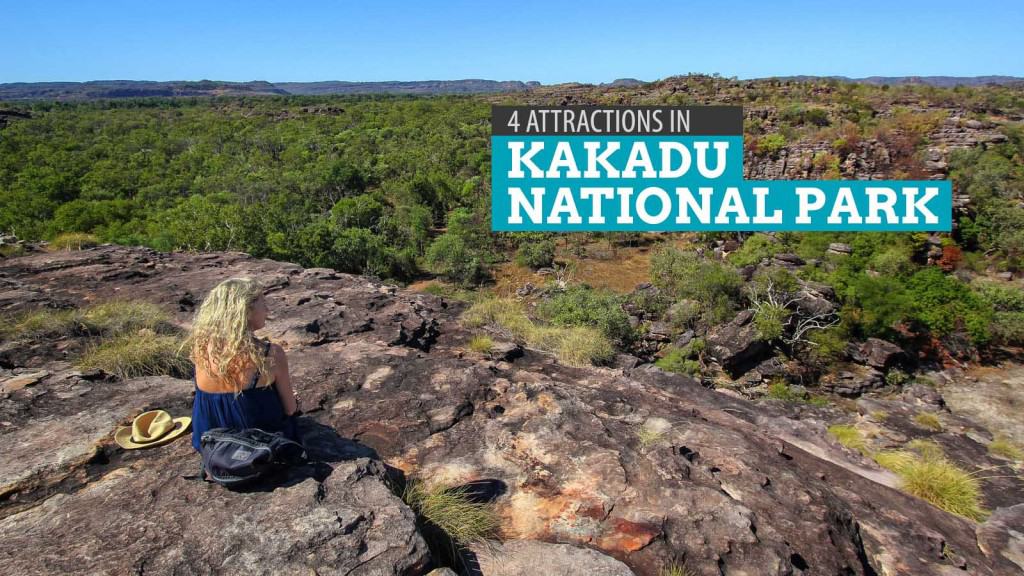The boat approached a nook along the Mary River, parting the sea of lotus lilies along the way. Our driver and guide Reuben moored the boat and rose from his seat. “It’s been a wonderful afternoon; thank you for spending it with me,” he said before revealing a bottle of champagne.
It wasn’t just the afternoon that had been wonderful to us. From that first step into the AAT Kings bus down to that jump out of it at the end of the day, every single moment we had on that tour was nothing but pleasant. Kakadu had been nothing but accommodating and cooperative. She gave us most of what we visited her for: a peek at her cultural past and a closer look at her biodiversity.
Our journey began in Darwin, 171 kilometers northwest of Kakadu. Darwin is the closest major city to the national park, but it took us more than three hours to get there. Spanning over 20,000 sq. km of forests, wetlands, and savannas, it is the largest national park in Australia, about half the size of Switzerland and nearly the size of Slovenia. Because of its ecological and cultural value, the UNESCO listed it a World Heritage Site in 1981.
Here are the four highlights of our day tour around Kakadu.
1. Ubirr Rock Art Site
Kakadu National Park has the richest collection of aboriginal rock art. Ubirr is just one of the three world-famous art sites in the area; the other two are Burrunguy (Nourlangie) and Nanguluwur. The massive rocks of Ubirr pepper the edge of Nadab floodplain and the East Alligator River, making them ideal shelter locations for the Aboriginal people. Their paintings have been adorning the rock shelters in the area for thousands of years. The reasons for making these paintings vary from religious to educational.
Most of the artworks here are images of food items: barramundi, catfish, and goannas. Even the now extinct thylacine, last seen in the 20th century, is immortalized on one cliff along the main gallery.
2. Nadab Lookout
Nadab Lookout is a rocky crag that rises on the edge of Ubirr and overlooks a part of Arnhem Land. The climb to the top is easy, but a marvelous sight awaits. The lookout allows a panoramic view of the Nadab floodplains, where the savanna meets the grasslands, and the grass gives way to the marshes.
3. Bowali Visitor Center
I initially wanted to skip this but decided to push through with it at the last minute. Good decision. It offers a wealth of knowledge to tourists exploring Kakadu. The center showcases the history, culture, and biodiversity of the national park. Emphasis on biodiversity because if you’re going to do a Mary River cruise (like I did), a visit here would serve as an introduction to the rich and colorful wildlife of the area.
They also have a small cafe, which makes it an ideal afternoon tea stop.
4. Mary River Cruise
Mary River is just one of the eight rivers snaking across the Top End, and it is known for having the world’s highest concentration of saltwater crocodiles. This makes it an ideal place to spot salties and its less aggressive cousin, the freshies (freshwater crocodiles).
The tour usually starts or ends at the Corroboree Billabong, where a guide would lead an hour-long boat ride. Along the way, we spotted several salties and freshies, and a wide array of birds. Our guide Reuben was very generous with information, and made the afternoon a lot more insightful than I expected. We closed the trip by raising a glass cup of champagne as we were moored in one nook of the lotus-covered river.
Where to stay: Darwin is the closest major city. Darwin YHA Hostel offers affordable accommodations right at the heart of the city center and with fast internet connection. Day tours are also available. Visit their official website or book now at: www.yha.com.au. Where to book tours: I was booked with AAT Kings, a leading tour operator in Australia and New Zealand. Check out their guided tours at: www.aatkings.com.
